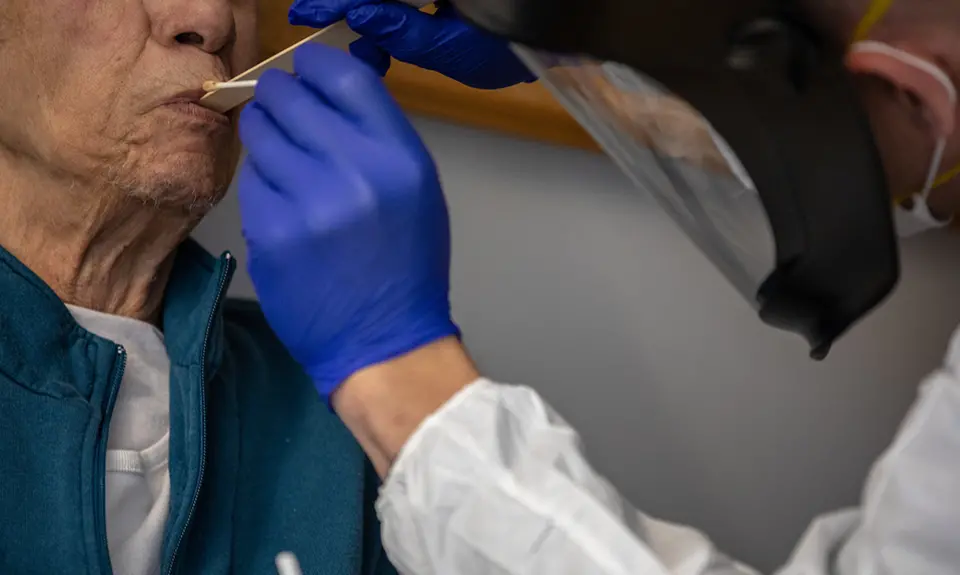During this unprecedented emergency, People for the American Way has continued to work to safeguard vulnerable communities. We are pushing our lawmakers for solutions to address these inequities, and to help our members stay aware and up-to-date, we are sharing emerging news and data on the blog to highlight how our vulnerable communities are suffering and offer resources on how to get involved in our work to protect them. Read our previous posts here.
Today, we’re covering the impact on people with disabilities and the challenges they are facing amid this global health crisis.
Since the pandemic shut down most of the country, Americans from all walks of life are dealing with an onslaught of unforeseen obstacles. In addition to contracting the virus, we are now grappling with mass layoffs and a looming economic depression, overcrowded hospitals, empty grocery store shelves, and more. We know that public health and economic aspects of this pandemic are disproportionately affecting many different vulnerable communities. The disability community is among them.
An estimated 61 million people in the U.S. are living with a disability. Even before this crisis, the disability community dealt with biases in health and medical care and struggled to access government benefits. Now, in addition to the obstacles outlined above, they are experiencing a range of more immediate and urgent problems that further jeopardize their safety and welfare.
For example, many people with disabilities have had to make an impossible choice between self-isolation and getting the care they need. Those who rely on caregivers for help with everyday tasks like bathing, eating, and light housekeeping now must consider the risk to their health to maintain that level of assistance – if it’s even available to them during the pandemic. Because so many caregivers and home care aides don’t receive paid sick leave, health insurance benefits or personal protection equipment (PPE), some have stopped reporting for work due to their own health concerns. That group and those under their care are both in jeopardy.
People with disabilities who live in nursing homes, psychiatric institutions or other congregate settings are also experiencing undue risk. These locations can – and in some cases, have – become public health hazards for people with disabilities. In late March, for example, New York imposed a statewide requirement that nursing homes accept newly discharged hospital patients – even those who tested positive for COVID-19. One month later, the number of positive tests and COVID-related deaths in nursing homes spiked dramatically – and is still growing.
Race, ethnicity, age, citizenship status and other social factors can further compound the harmful impacts of COVID-19 on the disability community. For example, immigrants with disabilities who are detained in detention centers also face an undue risk of contracting the virus. The rate of disability in that population is unusually high, and under the Trump administration, ICE’s cruel and inhumane treatment includes denying disabled detainees access to medical and mental health care accommodations and other basic needs. Many immigrants have had their wheelchairs, crutches and other necessary equipment taken away from them. Coupled with the severe overcrowding and unsanitary conditions, disabled people in detention centers become even more medically susceptible to the virus.
Young students with disabilities, who rely on one-on-one interactions and guidance from teachers and other specialists, are also facing unique obstacles. Virtual learning options are not an adequate replacement for these students: Tools like Zoom and Microsoft teams aren’t compatible with assistive technology, like screen-reader software or braille readers, and American Sign Language (ASL) relies on subtle physical nuances that are harder to catch on digital screens. The dramatic and sudden disruption to online learning also hurts students with autism spectrum disorder, who need consistency and routine to learn and grow.
We need to support the disability community during this time of duress. Absent comprehensive funding to expand access to home and community-based services, they will continue to face disproportionate risks. That means fighting for policies that comprehensively address their needs and making sure that caregivers are included in emergency paid leave provisions. As we consider how we can support one another, let’s not leave this community behind.
